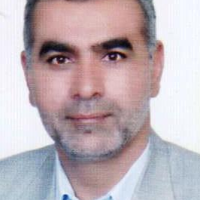Optimum Business Model in Citrus Value Chain Based on Economic, Social, Cultural, Biological and Structural Components in Fars Province
A suitable business model in the agricultural value chain enables the use of the full potential of the agricultural sector. The most important and first horticultural product of Iran is citrus fruit, which ranks 7th in the world. However, it occupied the 31st rank of the world market. The disproportion between the production and the effective share in the global market indicates that there is no good pattern in the product value chain. With the production of 1.4 million tons of citrus fruits, Fars province ranks second among the provinces of the country. This research is looking for an optimal model of citrus value chain according to economic, social, cultural, biological, and structural components. Delphi technique was used to prepare the required information and complete the questionnaire by holding briefing sessions with the participation and consensus of 32 experts of the province, including experts related to production, unions, leading gardeners, exporters, and experts related to the citrus processing industry. Analytical Hierarchy Process (AHP) was used in order to analyze the data, calculate the weight of the criteria, and achieve the best citrus value chain model. The results of this research showed that the economic, socio-cultural, bio-environmental, and structural components in the province play a significant role in explaining the desired business model in the citrus value chain. Therefore, based on the above-mentioned four criteria and 21 sub-criteria studied, with the highest relative weight of 0.399, the "Orchestrator model" is the best model among the business models in the value chain. Furthermore, with a relative weight of 0.128, the "Integrated model", which was ranked last, is the least important model.
-
Integrated assessment of the water resources system using water accounting framework in water stressed areas: a case study of Karkhe dam down stream
Ali Mohammad Akhund Ali, Rahim Avarand *, Abdolrasol Shirvanian, Amin Khoramian
Journal of Advanced Technologies in Water Efficiency, -
The effect of cropping pattern modification on the physical and economic productivity of crop irrigation water in Fars province (Case study: Qaderabad-Madarsolaman plain)
Amir Eslami *, Abdolrasool Shirvanian, Reza Zareian
Irrigation and Drainage Structures Engineering Research, -
اثرات بسته دانشی بر بهبود انگور یاقوتی در منطقه سیستان
بیژن کاووسی*، منصور سارانی، ، غلامعلی کیخا، منصور فاضلی رستم پور، غلامرضا آذرسا مفرد، مرضیه روشن، بهزاد شهرکی، عباس آذر
نشریه انگور، پاییز و زمستان 1402 -
اصول و نقش هرس سبز در مدیریت تاکستان
بیژن کاووسی*، کریم سعیدی،
نشریه انگور، بهار و تابستان 1399




